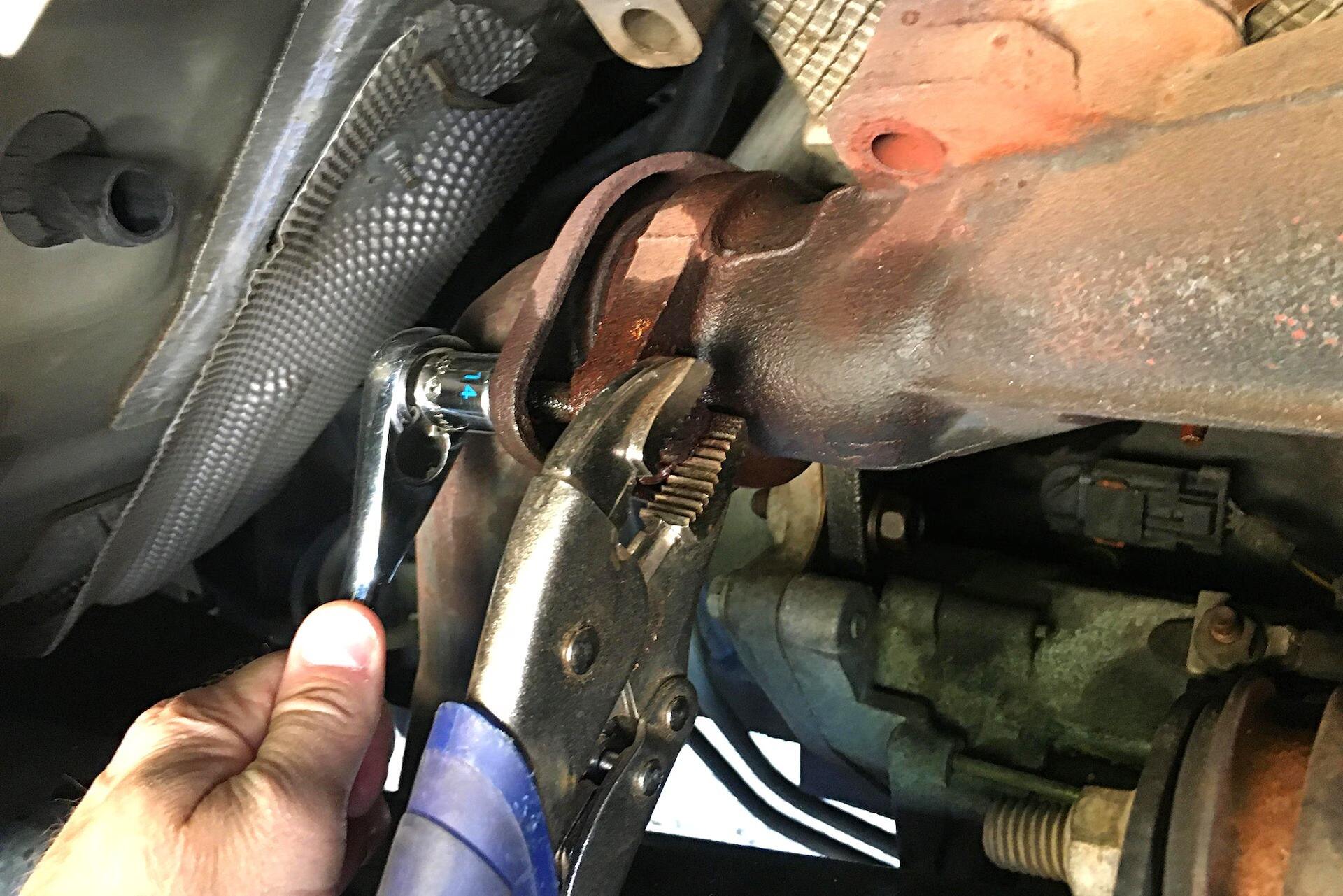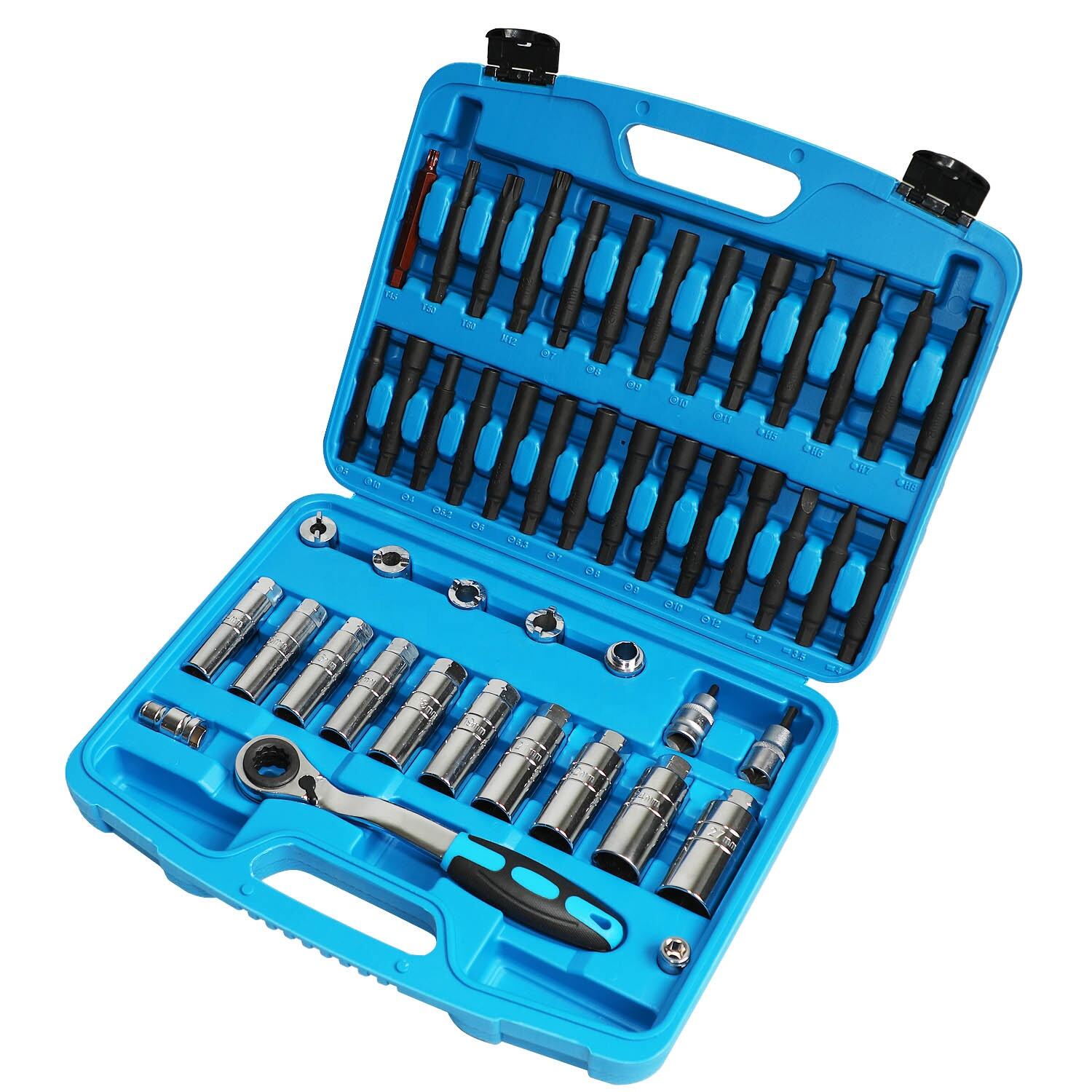Exhaust manifold bolts endure extreme heat cycles, corrosive exhaust gases, and constant vibration. Over time, these factors fuse bolts to their threads through rust and carbon buildup, turning a simple repair into a battle against sheared bolts, stripped heads, and hours of frustration. Traditional methods like hammering, torching, or brute force often worsen the problem, but HTL’s anti-shear socket kits and penetrating oil systems offer a smarter, safer path to victory.
Exhaust manifold bolts are prone to seizing due to:
Galvanic corrosion: Dissimilar metals (e.g., steel bolts in aluminum heads) react chemically, accelerating rust.
Carbon lock: Exhaust soot invades threads, cementing bolts in place.
Heat cycles: Repeated expansion/contraction distorts threads, creating mechanical binds.
Consequences of Failed Extraction:
Broken bolts requiring costly drilling/tapping.
Damaged cylinder heads or manifolds.
Extended downtime and customer dissatisfaction.

HTL’s tools are designed to outsmart seized bolts through precision and durability:
Heat-treated chrome molybdenum steel: 30% harder than standard sockets, resisting rounding and deformation.
Fluted internal geometry: Bites into rounded or damaged bolt heads without slipping.
Anti-camout design: Angled edges prevent socket pop-off under high torque.
Penetrating oil infusion system: Delivers rust-dissolving fluid directly to threads via hollow socket cores.

1. Pre-Soak with HTL Penetrating Oil
Apply HTL’s thermal-reactive penetrating oil to bolt threads.
Heat the surrounding area with a torch (300–400°F) to expand the metal and draw oil into threads.
Let sit for 15–30 minutes (reapply if needed).
2. Select the Correct Socket
Match the bolt head size precisely (e.g., 13 mm, 15 mm).
For rounded bolts, use HTL’s tapered extraction sockets.
3. Apply Controlled Torque
Attach a breaker bar or impact wrench set to low torque (50–80 ft-lbs).
Use steady, gradual force—avoid jerking.
If resistance spikes, reverse direction (left-hand drill bits can help).
4. Extract Stubborn Bolts
For broken bolts, use HTL’s extractor kit with left-hand spiral flutes.
Drill a pilot hole and twist counterclockwise to unthread the remnant.
5. Clean and Protect Threads
Chase threads with a tap to remove debris.
Apply nickel-based anti-seize before reinstalling bolts.
| Factor | Standard Tools | HTL Anti-Shear Kits |
|---|---|---|
| Bolt Survival Rate | 40–50% (high shearing risk) | 85–90% (controlled extraction) |
| Time per Bolt | 20–30 minutes (with setbacks) | 5–10 minutes (systematic process) |
| Tool Durability | Low (sockets round or crack) | High (rated for 10,000+ cycles) |
| Heat Requirement | Often requires open flame | Optional (penetrating oil works cold) |
Using incorrect socket sizes: Accelerates rounding of bolt heads.
Over-torquing impact wrenches: Snaps bolts before oil penetrates.
Skipping thread cleaning: Leaves debris that causes new seizures.
Cost savings: Reduce drill-outs and thread repairs by 70%.
Versatility: Kits fit domestic, import, and heavy-duty applications.
Safety: Eliminate open-flame risks with penetrating oil infusion.
Seized exhaust bolts don’t have to derail your workflow. With HTL’s anti-shear sockets and penetrating oil systems, you’ll extract even the most stubborn fasters cleanly and efficiently—keeping repairs on track and customers satisfied.
Equip your shop with HTL’s extraction kits. [Request a Demo] or download our free bolt removal checklist today!
Q: Can HTL sockets handle torque over 150 ft-lbs?
A: Yes—kits are rated up to 250 ft-lbs with a breaker bar.
Q: How does the penetrating oil work without heat?
A: HTL’s formula contains nano-particles that penetrate rust microscopically, even cold.
Q: Are these tools compatible with aluminum heads?
A: Absolutely—anti-shear sockets won’t gall or damage soft metals.
With HTL’s technology, seized bolts meet their match—every time. 🚗🔧💪
